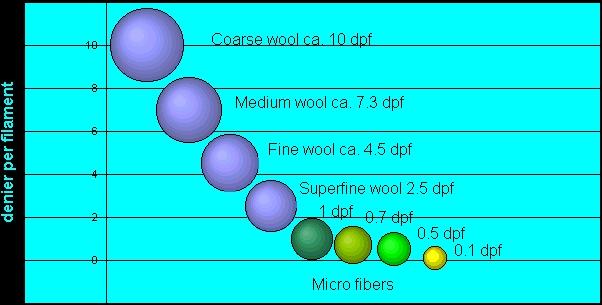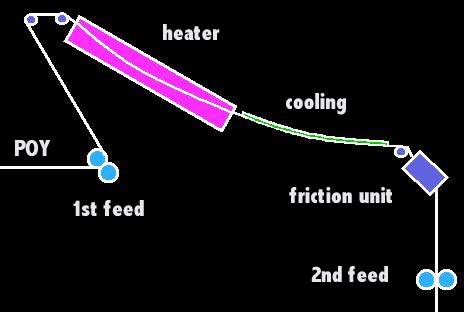Microfiber Texturing
Udo Schweizer’s Texturing Pages
Introduction
Natural fibers have for eons helped people to protect themselves from the perils of nature. The domesticated sheep became not only a source of food but also a source for fibers, which, as time progressed, were hand spun and woven into fabrics. Later in time, cotton and plant fibers were added to supplement human’s desire for alternative and more adapted clothing. With the discovery of silk production a new dimension entered the textile world. Here suddenly was a seemingly endless fiber, which could be spun into a yarn thinner than anything before. And with this set of fibers humanity lived contentedly until recently.
Spinning of synthetic yarns allowed the chemical fiber industry to produce synthetic yarns that could be woven or knitted into fabrics with similar properties as they were obtainable with natural fibers. In many cases synthetics have even helped to improve the durability and esthetics of fabrics. In order to get softer fabrics lower dpf yarns were developed. But suddenly the race was on. Could filaments or fibers be produced commercially, thinner than anything mother nature had produced thus far? The answer was “YES”. Micro fibers were born and they are here to stay.
In a comparison I will demonstrate to you below the diameter of fibers from coarse wool down to some of the finest yet commercially available polyester micro fibers.

Based on the specific weight of the fiber material (1.32), the graph above demonstrates nicely how small in diameter micro fibers really are. Most commercially available wool fabrics are made from medium to fine wool. Today, any fiber less than 1 dpf (denier {or dtex} per filament) is called a micro fiber.
There are two ways to produce micro fibers:
Direct spinning of POY with high number of filaments such as dtex 250 f 196, which would result in a drawn and textured yarn of dtex 150 f 196. The POY has to be interlaced in spinning to give reasonable run ability in texturing.
Bicomponent spinning of yarns, where each filament will split into a multitude of smaller filaments after a chemical treatment during the finishing of the fabric.
Both ways are being practiced today. The first one being the more economical method because of a much lower investment cost for such yarns and the latter one being a method, which allows the production of very specialized yarns with interesting cross sections.
Texturing machines for micro fibers:
With the production of micro fibers the demand to texture such fibers became quickly a reality. But to the consternation of the texturing industry, micro filament yarn seemed to be very difficult to texture. Broken filaments and the inability to utilize the yarns on high speed looms were the major setback. ARCT introduced years ago at a Textured Yarn Association of America (TYAA) meeting in Myrtle Beach test results of an improved machine design. Their pioneering design showed to me for the first time that a dramatic reduction of broken filaments was possible. The trick was to have a basically single curved texturing zone and cooling zone without any major deflections. This concept was later picked up and further refined by nearly every other texturing machine producer. The guide in front of the heater is very often a twist stop roller. The twist zone is thus reduced to the length of the heater and the cooling zone. Shorter twist zones reduce the tendency toward surging and allow therefore higher production speeds. Now, also interlacing the finished textured micro yarn is an accepted standard allowing much improved weaving, warping and knitting speeds.

What does it take to texture micro filament yarns:
Straight and short yarn path in texturing zone, very specially designed low friction ceramic guide surfaces, twist stop roller, specially designed polyurethane friction disks for an even twist insertion, shorter than normal heater because micro is more heat sensitive, 20 – 30% lower texturing speed, no second heater treatment necessary because of micro’s low crimp modulus, micro-coning oil to cater to the special needs of the wicking action of micro.
End Use:
It has been well advertised that very soft fabrics can be made with the help of micro filament yarns. Properties such as water repellence and steam permeability are associated with micro fibers. Little or nothing has been said that such properties need high-tech finishes and-or fabric laminations with specially designed foam backings. Untreated micro fibers will absorb water very readily due to wicking and have now found their way into towels. Micro fibers will not only pick up water but also dirt particles will be picked up better than with any other fiber. This makes it the ideal fiber for clean room fabrics.
- Educational Texturing Pages
